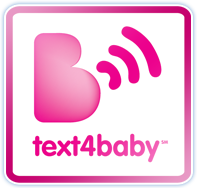Motor vehicle accidents are the leading cause of death in children ages 3 to 18. Properly used child safety seats (car seats and booster seats) as well as seat belts have been shown to reduce that risk dramatically.
While there are laws in all 50 states dictating child safety seat (CSS) use, the laws aren’t always followed, and more importantly they lag behind best practice recommendations regarding child safety in cars.
Current Tennessee law says that infants under 1 must ride in a rear facing CSS. However, the American Academy of Pediatrics recommends that infants ride rear-facing until they are 2. In event of an accident, a rear-facing CSS allows the forces to be spread out more evenly and place less stress on the head and spine. Parental concerns that infants legs are too cramped or that babies aren’t happy beyond a year are typically overstated. Most don’t know any better.
Once your child is 2 and the CSS is turned forward facing it should remain that way until your child is 40lbs and 4 years old according to Tennessee law. In reality, the longer your child rides with the full harness system of the CSS regardless of age or weight, the safer they are in event of an accident. The harness spreads the forces over a wider area of their body and limits head movement, thereby reducing organ damage and whiplash injury. Some newer CSS have weight limits up to 60 lbs allowing children to ride up to 5 or 6 years of age.
After a car seat comes a booster seat. Booster seats help position the child so that the seat belt fits properly over the middle of the chest and shoulder, not over the neck, and low over the hips and thighs. High back booster seats should be used in a car with low seat backs or without headrests since the high back helps protect against whiplash injury. Low profile booster seats may be used if the car has headrests or a seat back that extends above the child’s ears. Tennessee law only requires the use of the booster seat until 8 though safety should dictate their use until your child is around 4 foot 8 inches tall. At this height your child’s legs are more likely to bend naturally at the edge of the seat, while the seat belt will fit snug across the hips, and the shoulder belt will fit across the middle of the chest. It is crucial that the shoulder belt not slide up over the neck, and the lap belt not slide up over the abdomen, since in an accident, internal organs could be damaged. Some children are not yet 4’8’’ at 8 years of age and should really continue riding in a booster seat beyond the state mandated age in order to be safe in a car.
Once out of a booster seat, a child should not ride in the front seat until the age of 13 unless the airbag can be deactivated.
When installing a CSS, the middle of the back seat is the best place. If you need help, you can go to safecar.gov for a list of places near you home where you can take your car and CSS to be inspected to make sure it is installed properly.
Keep in mind when purchasing a CSS it doesn’t have to be the most expensive CSS, it just needs to be the one that will fit in your car, fits your child, and one that you feel comfortable using. All car seats sold in the United States are required to meet the same safety standards regardless of price. Just ensure your child is riding in his/her car seat or booster seat each time they ride in the car.
For additional information on car seats, check out this article from HealthyChildren.org.
The information and content on our website should not be used as a substitute for medical treatment or advice from your doctor.




